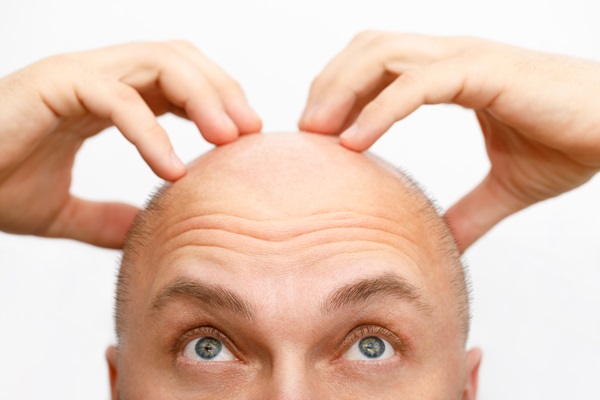5 Hair Restoration Treatment Options

Hair loss is as common as it is frustrating for those dealing with it. However, advancements in hair restoration technology are giving people hope. From medications and new hair transplant techniques to novel approaches employing platelet-rich plasma therapy and low-level lasers, there are now more options than ever for the many people dealing with hair loss.
If you are struggling with hair loss and unsure what to do, this article can help. The following is an overview of five major hair restoration options. We will look at how they work and when they are recommended.
Medication for hair loss
Several topical and oral medications, prescription and over-the-counter, can help men and women with hair loss. Some solutions are oral medication, while others are topical solutions applied directly to the desired hair growth area. Typically, these medications slow hair loss and stimulate hair growth. Popular medications include:
- Minoxidil: Also known as generic Rogaine®, minoxidil is an over-the-counter drug available in topical forms for both men and women.
- Finasteride: This is available in both oral and topical forms to treat hair loss in men.
- Spironolactone: This is an oral medication used to treat high blood pressure, which can, in turn, treat hair loss in women.
- Dutasteride: This prescription drug is similar to finasteride, which treats hair loss in men.
These options can also work in tandem with other treatments in a hair loss treatment plan. Each drug has its own set of benefits and drawbacks, as well as side effects. Since the efficacy varies, patients should consult a medical professional on which medication best suits them.
FUT hair transplant
Hair transplantation has come a long way, and current methods can produce more natural-looking results. FUT, or follicular unit transplantation, is one current method. It is a minimally invasive procedure to help restore hair to bald areas.
During the procedure, the surgeon takes a strip of skin from the scalp, usually from the back of the head, where hair is more plentiful. The area from where this strip is taken is then stitched closed. Next, the strip is divided into many smaller pieces called grafts. It is these grafts that are planted in the area where hair growth is desired.
FUE hair transplant
This hair transplant method is similar in many ways to the FUT method. However, this is a newer method with one important difference: FUE stands for follicular unit transplantation and does not involve removing a strip of hair that can lead to a noticeable surgical scar. Instead, the surgeon extracts individual follicular units for transplantation to the desired area.
Scarring from this procedure is minimal and involves less downtime, which is why this method is so attractive to many. However, it is important to note that FUE is a much longer surgical process than FUT. Each method has its own advantages and disadvantages, but both tend to be highly effective. A hair restoration professional works with each patient to help them decide on a method.
Laser hair restoration
For those who prefer to go the minimally invasive route, laser hair restoration is an alternative to surgical methods. Also known as red light or cold therapy, this method uses light energy to improve blood circulation and promote new hair growth. It works best for those in the early stages of hair loss.
Laser hair restoration is associated with little to no discomfort and side effects. In addition, patients can see improvement in as little as two months after treatment begins. However, it is important to note that this is not a one-time treatment. A series of treatments is needed to yield results.
Platelet-rich plasma
Platelet-rich plasma therapy is another minimally invasive method used to treat hair loss. It employs growth factors in the patient's blood to help promote new hair growth and prevent more hair loss. Also known as PRP therapy, the procedure is low-risk and does not usually cause side effects.
For a PRP treatment, the doctor takes a sample of the patient's blood and sends it through a centrifuge to make platelet-rich plasma. This platelet-rich plasma is then injected into the scalp in areas where increased hair growth is desired. PRP therapy for hair loss is a fairly new treatment, and like laser hair restoration, the patient needs a series of treatments to see results.
Get the full head of hair you deserve
Hair loss is a fact of life for many, but it does not have to be permanent. If you are struggling with hair loss, schedule a consultation with our team so we can evaluate your needs and recommend the course of treatment that best suits you. For more information on these and other hair restoration options, call us today.
Request an appointment here: http://dillonhair.com or call Dillon Hair Restoration at (800) 518-9307 for an appointment in our Schaumburg office.
Check out what others are saying about our services on Yelp: Hair Restoration in Schaumburg, IL.
Recent Posts
Hair loss can usher in mixed emotions and damper your self-esteem, whether or not you were expecting the day. Fortunately, hair plugs or grafts can provide patients with a full head of their natural hair. If thinning or balding is something you are experiencing right now, help is available at our Schaumburg office. First, review…
Hair thinning treatments are far more versatile than they get credit for. Our team works closely with each patient to determine the root cause of their thinning tresses and craft an effective treatment plan. Take a closer look at common causes of hair thinning and the various methods we can use to treat it.Many factors…
Hair loss can significantly impact people, affecting their self-confidence and interpersonal relationships. Fortunately, hair grafting, also known as hair transplantation, provides a viable option to restore the natural hairline. If you are still deciding whether to pursue a hair graft, here are three reasons to consider it.Unlike temporary solutions like wigs or hairpieces, a hair…
For those with wrinkled skin, Botox® injections can provide great relief. While it may be a natural sign of aging, the presence of wrinkles can be frustrating to some. Thanks to the scientific research and testing in the 1990s by several dermatologists, Botox® was approved in 2002 by the Food and Drug Administration for cosmetic…


